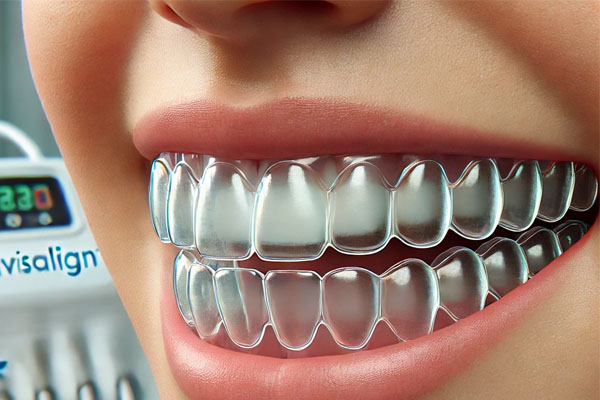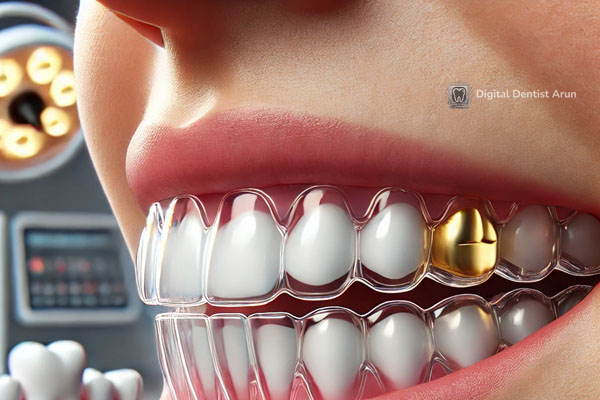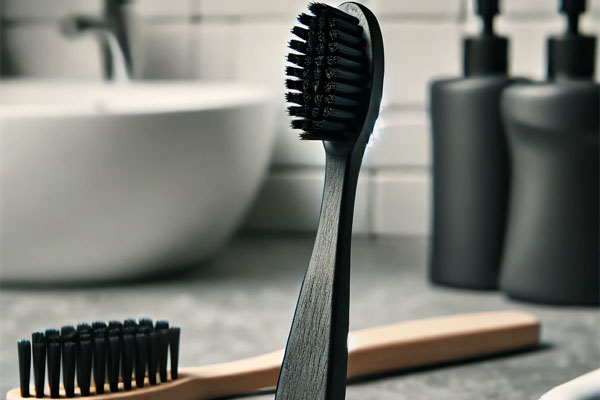Invisalign has brought a drastic change in orthodontics by offering a nearly invisible, removable alternative to traditional braces. However, for individuals with dental crowns, bridges, or other dental work, the question arises: Can you get Invisalign with crowns?
In this article, we’ll explore how Invisalign interacts with crowns and bridges, whether it’s a good option for you, and how your dentist can create a treatment plan that works around your existing dental restorations.
What is Invisalign?
Invisalign is a modern orthodontic solution that uses transparent, removable aligners to gently move your teeth into proper alignment. Unlike conventional braces, which involve metal brackets and wires, Invisalign aligners are discreet and nearly invisible, making them an attractive option for adults and teenagers who prefer a subtle approach to enhancing their smile. The aligners are custom-made for your teeth and are replaced every two weeks as your teeth gradually shift into the desired position.
How Invisalign Works with Dental Crowns
When it comes to Invisalign with crowns, the good news is that Invisalign can work effectively with dental crowns in most cases. Crowns are protective caps placed over damaged or decayed teeth, and since Invisalign aligners are designed to fit snugly over your teeth, they can often fit well over crowns too.
Here’s how Invisalign interacts with crowns:
- Gentle Pressure: Invisalign applies gentle pressure to your teeth to move them into alignment. Crowns are no exception, and the aligners can still move the crowned teeth, though the movement might be slightly less predictable compared to natural teeth.
- Material Sensitivity: Since crowns are made of different materials (such as porcelain or metal), your dentist will ensure that the aligners won’t cause any undue pressure or damage to the crown.
- Customization: Invisalign treatment is fully customizable. If you have dental crowns, your orthodontist may slightly adjust the treatment plan to ensure proper alignment without risking damage to your existing dental work.

Challenges of Invisalign with Crowns
Although Invisalign with crowns can work, it’s essential to be aware of a few potential challenges:
- Unpredictable Tooth Movement: Crowns are generally durable but might not respond to pressure in the same way as natural teeth. This means the movement of crowned teeth might be less predictable during Invisalign treatment. Your dentist will carefully track your progress throughout the treatment to ensure the most effective outcome.
- Attachment Bonding: In some cases, small tooth-colored attachments are bonded to the teeth to help Invisalign aligners grip better and move the teeth more effectively. Attaching these grips to a crowned tooth can sometimes be challenging, but your orthodontist will evaluate whether it’s necessary and feasible in your case.
How Invisalign Works with Dental Bridges
Dental bridges, which are used to replace one or more missing teeth by anchoring artificial teeth to adjacent natural teeth, can be a bit more complex when it comes to Invisalign. Unlike crowns, which cover a single tooth, bridges connect several teeth together. This makes it difficult to move individual teeth with a bridge.
However, here are some things to consider:
- Limited Movement: If you have a bridge, Invisalign might still be an option, but it could limit the amount of movement in the area of the bridge. Since the teeth connected by the bridge need to move together, your orthodontist will evaluate whether this movement aligns with your overall treatment goals.
- Alternative Treatment Options: In some cases, if tooth movement in the bridge area is critical, your orthodontist may recommend alternatives like adjusting the bridge or considering other orthodontic treatments alongside Invisalign.
Why Consulting with an Orthodontist is Essential
Every case is unique, and whether Invisalign with crowns or bridges is suitable for you depends on your individual dental situation. That’s why it’s essential to consult with an experienced orthodontist or dentist before starting treatment. They will assess the current state and position of your crowns and bridges and create a personalized Invisalign treatment plan that works around your dental work. Together, you can discuss any potential challenges and find the best ways to address them.
Invisalign Benefits for Patients with Crowns
Despite the potential challenges, many patients with crowns successfully undergo Invisalign treatment and enjoy the benefits, including:
- Discreet Treatment: Invisalign aligners are virtually invisible, so no one will notice you’re straightening your teeth.
- Comfort: Unlike metal braces, Invisalign aligners are smooth and comfortable, reducing irritation to your gums and mouth.
- Removable: You can remove the aligners to eat, drink, and brush your teeth, making oral hygiene easier compared to traditional braces.
- Effective Results: With proper planning and adjustments, Invisalign can provide excellent results for patients with crowns and other dental work.

Maintaining Your Crowns During Invisalign Treatment
While undergoing Invisalign with crowns, it’s important to maintain excellent oral hygiene and follow your dentist’s care instructions to ensure the longevity of both your crowns and your treatment results. Here are some tips:
- Regular Check-ups: Schedule regular dental check-ups to monitor the health of your crowns and your progress with Invisalign.
- Gentle Cleaning: Brush and floss regularly, and be gentle around crowned teeth to avoid putting pressure on the restoration.
- Wear Your Aligners: Ensure that you’re wearing your aligners for the recommended 20-22 hours a day for the best results.
Final Thoughts
Invisalign is a versatile treatment that can work for many patients, even those with crowns or bridges. With the help of an experienced orthodontist and a customized treatment plan, you can still achieve the smile you’ve always wanted.
If you’re considering Invisalign with crowns, it’s important to have an in-depth consultation with your orthodontist to discuss your specific needs. Together, you can create a plan that accommodates your existing dental work while delivering effective results. Remember, the key to success is personalized care and regular check-ups throughout your treatment.

